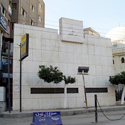
The Mansoura National Museum, also known as Dar (house) Ibn Loqman, is a living testimony to the steadfastness and sacrifices made by Egyptian people throughout their heroic resistance to the French military expedition led by French King Louis IX in Egypt in 1249. Landing on the Egyptian soil, the invaders could not by any means imagine that they would suffer humiliation and incur crushing defeat at the hands of the Egyptian people. Suffice it to say that French King Louis IX was captured and led handcuffed to the House of Ibn Loqman. He was released on May 7, 1250.
The museumís paintings and military gear chronicle the development of the battles in Mansoura to resist the Crusaders. The Mansoura National Museum, which was first opened on May 7, 1960 by late President Gamal Abdel-Nasser, is divided into three areas:-
1- Dar (House) Ibn Loqman, which overlooks the Nile. It was built in 1218 by Fakhrul-Din Ibn al-Qadi, the chief judge in Egypt.
2- Modern and well-equipped hall, in which statues and paintings are exhibited.
3- Art gallery, in which exhibitions, cultural soirees and seminars are held.
The museum was reopened in 19 97 after it successfully underwent a thorough restoration and renovations. Its 46-piece assets include the invadersí weaponry and military gear. The most important exhibits are, however, the metal helmet of the French King and a chair he was offered in his jail. There are also sculptures and busts of King Louis IX and Prince Toran Shah. Relief maps illustrate the attack launched by the Crusaders in Mansoura, Dakahlia province. A couple of two oil paintings highlight the battle in the town of Faraskour and King Louis IX being led handcuffed to his jail to pay the ransom before he was set free. A third painting glorifies the major battle in the city of Mansoura. The museumís paintings and sculptures were made by Egyptian artists who were enthusiastic to contribute to reviving a glorious chapter in the history of Egypt during Islamic era. The